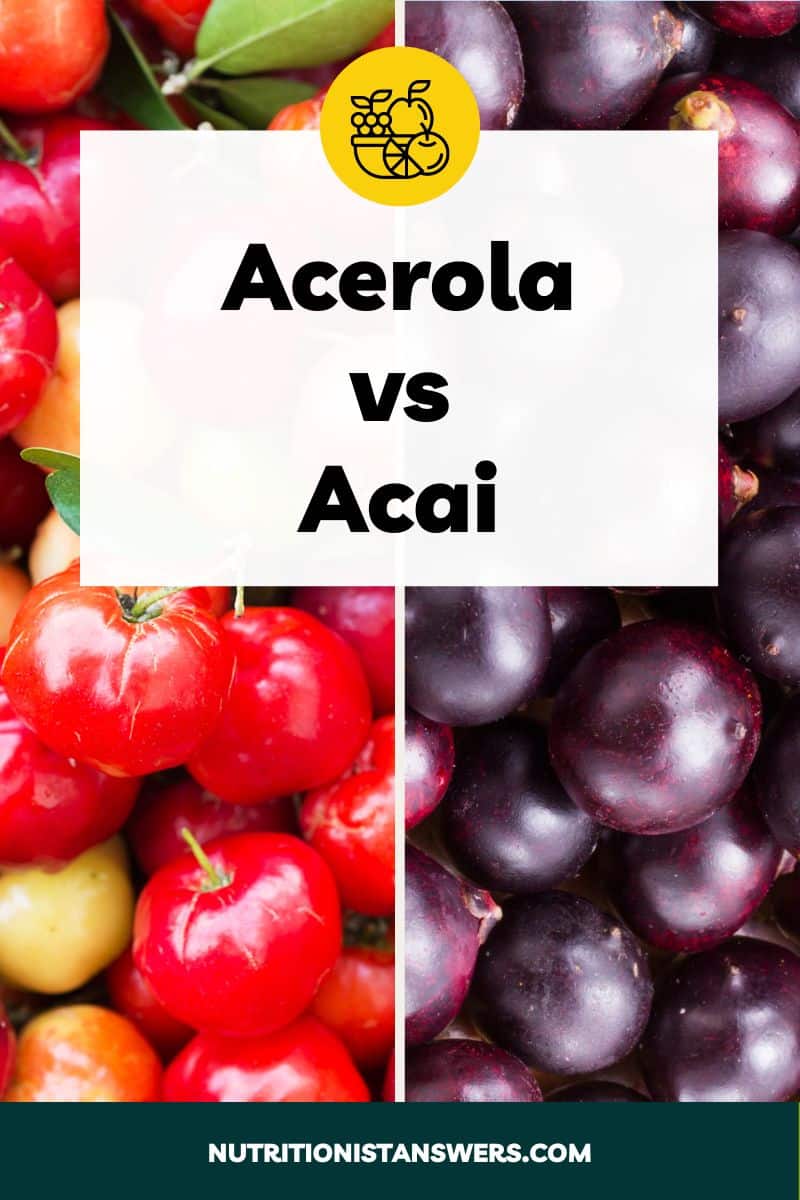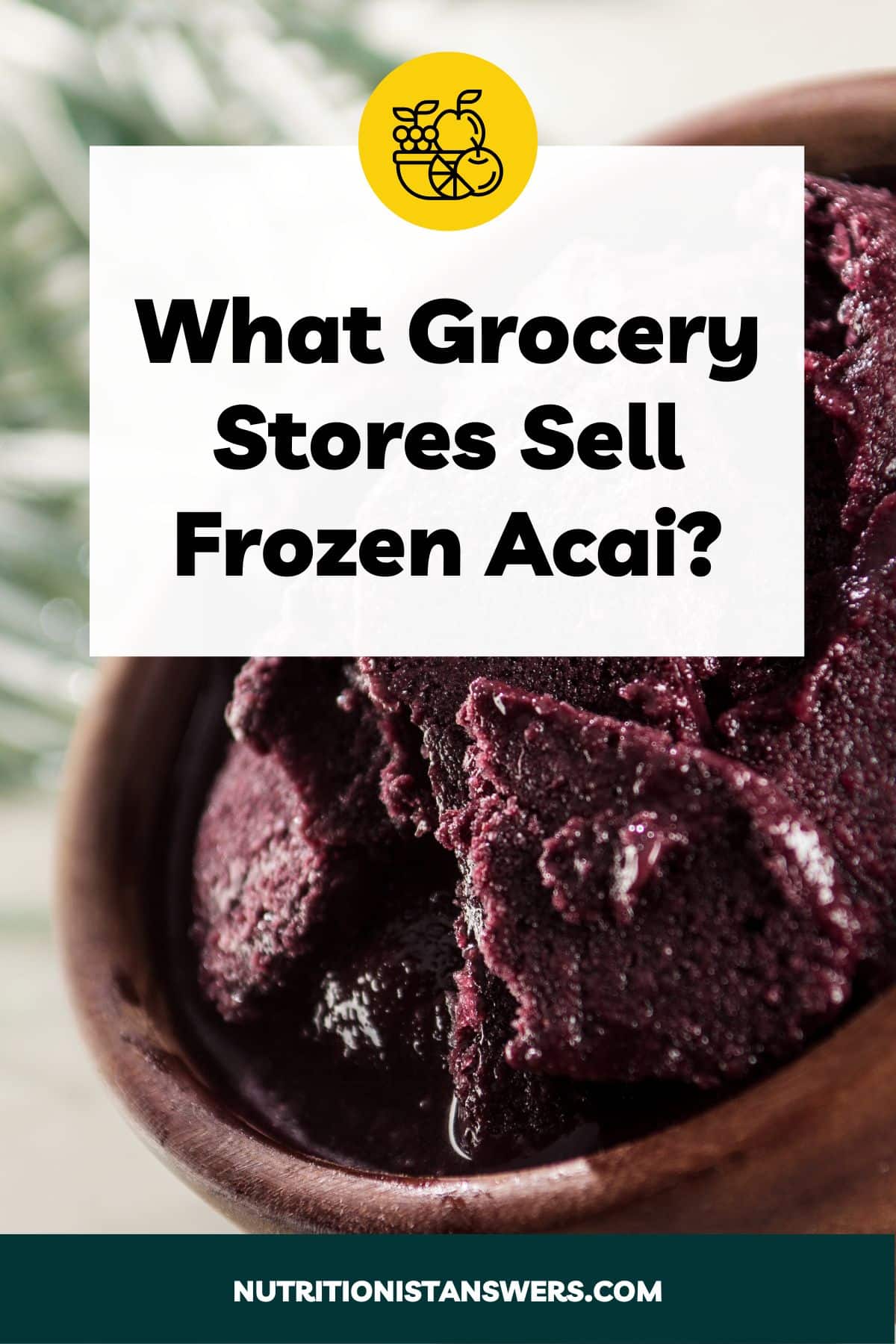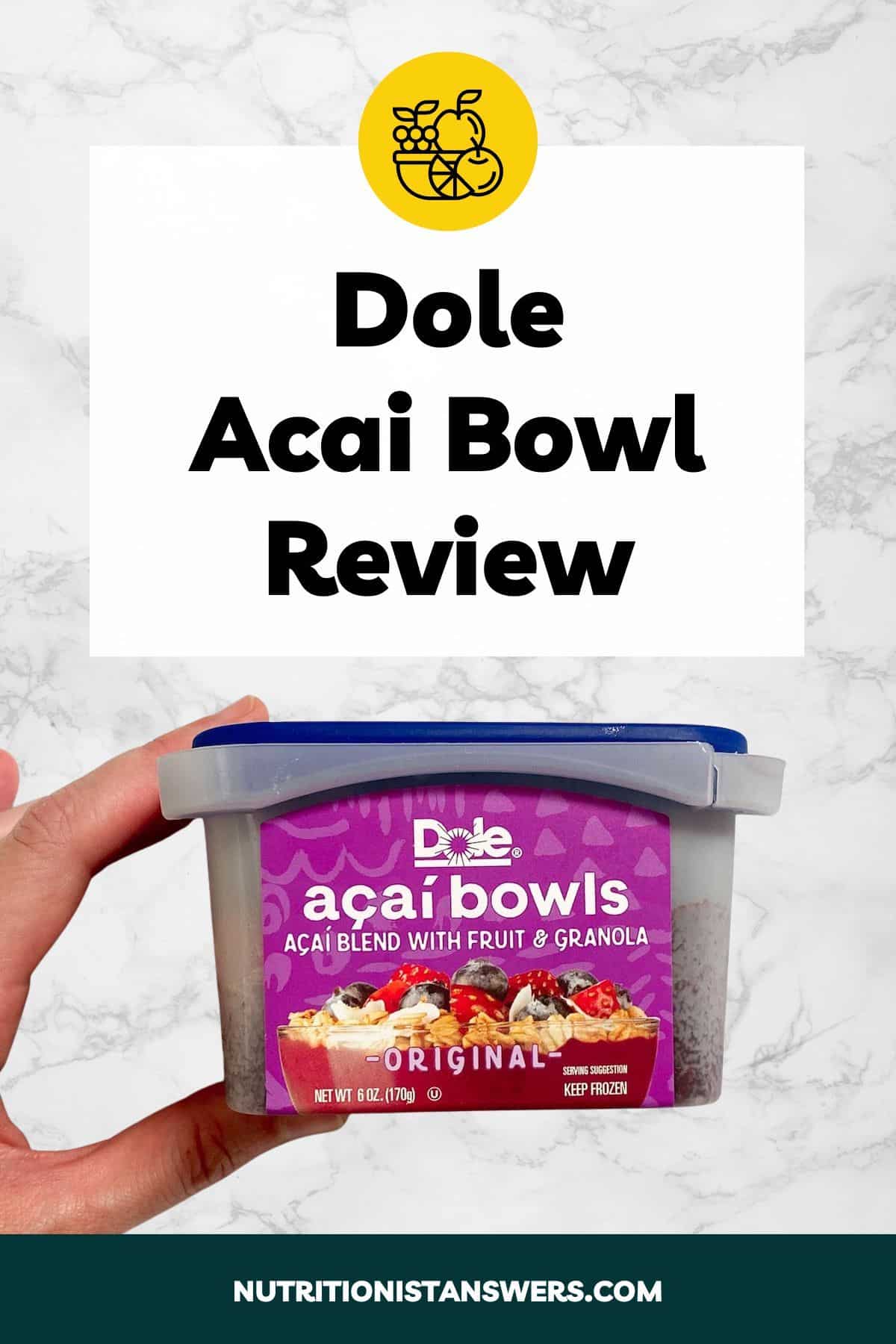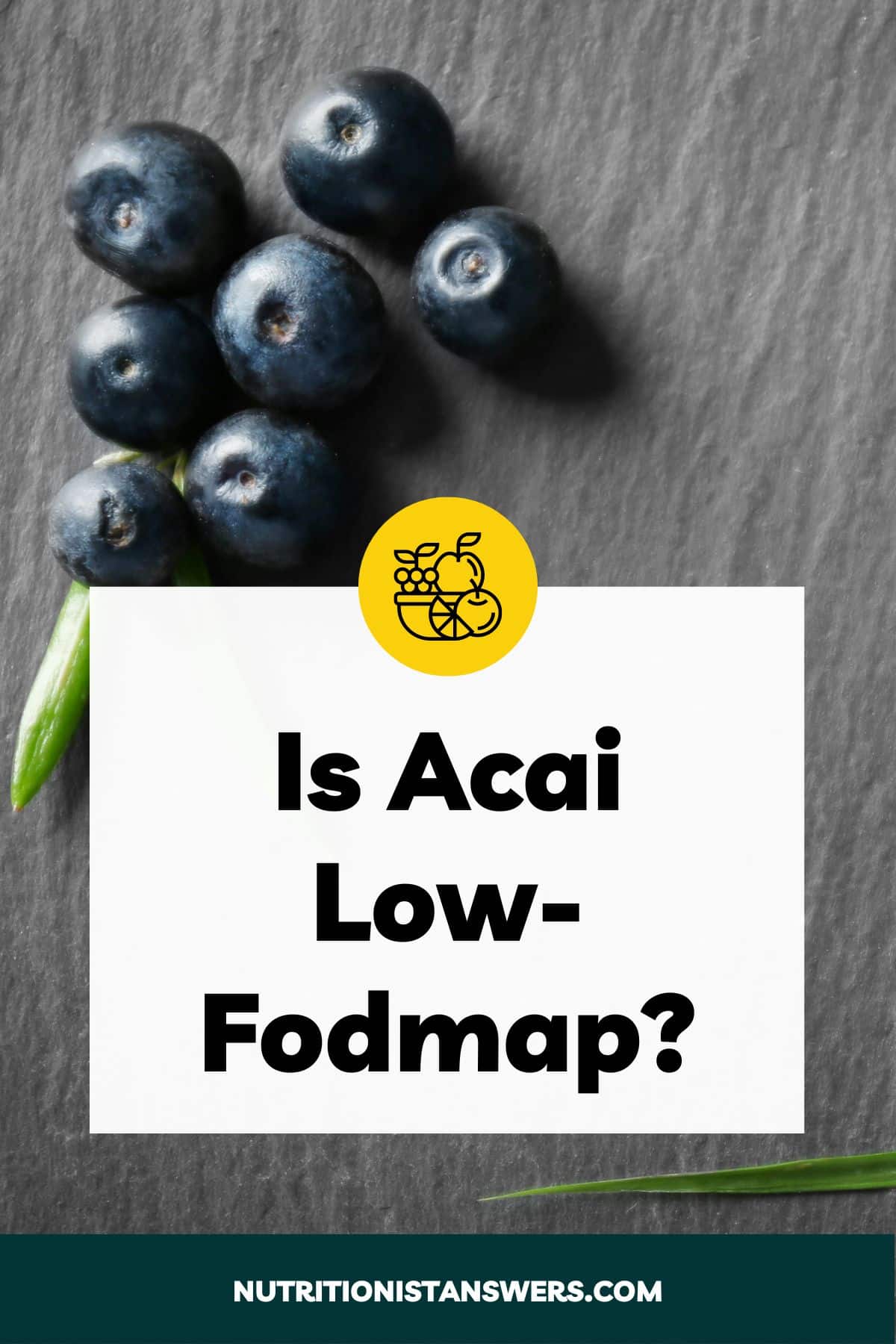Acerola and acai are tropical stone fruits that have recently become more popular in the United States.
Both fruits are known for their high antioxidant content, but you might be wondering how they compare in nutrition and taste.
In this article, we’ll take a closer look at the similarities and differences between acerola and acai.
Please note that this article contains affiliate links. If you click one of these links and make a purchase, we may earn a commission. As an Amazon Associate, we earn from qualifying purchases.
What is acerola?
Acerola, also known as Barbados cherry or West Indian cherry, is a cherry-like fruit that grows in tropical climates throughout Central and South America (1).
They are small (about 1 inch in diameter) and look like a cross between a cherry and a bell pepper, with glossy skin that turns bright red when ripe.
Acerola are classified as drupes (also known as stone fruits) along with peaches and plums (2). Each acerola fruit contains one large seed with 3 wings that form a triangular shape.
What is acai?
Acai (“ah-sigh-ee”) berries are small, dark purple fruits produced by Acai palm trees, which grow almost exclusively in the Amazon region of South America (3).
Although many people refer to them as berries, acai fruits are actually classified as drupes because they contain a single large seed in the middle.
Differences between acai and acerola
Acerola and acai are both tropical stone fruits, but there are a few important differences in their flavor and the nutrients they provide.
Acerola is sweet-tart with an astringent mouthfeel, while acai is earthy and slightly bitter. Acai has nearly twice as many calories and contains more fat, fiber, and protein than acerola. However, acerola is an incredible source of vitamin C, containing 150 times more than acai. Both fruits are very high in antioxidants.
Flavor comparison
Acerola is juicy and fragrant, with a sweet-tart, astringent taste that is sometimes compared to sour apples and star fruit.
Acai is known for its bitter and slightly sweet flavor, which some people have described as a cross between blackberries and dark chocolate.
Acerola pairs well with citrus fruits, berries, and kiwi, while acai is often paired with tropical fruits and coconut.
If you prefer sweeter fruits, acerola is the clear winner, although it does have a bit of tartness. Acai might be better if you’re looking for a more complex earthy flavor.
Nutrition comparison
Here’s a side-by-side comparison of the calorie and macronutrient content for acerola and acai, based on a 3.5-ounce (100-gram) serving size (4, 5, 6, 7, 8):
| Nutrient | Acerola (fresh) (100g) | Acai (frozen pulp) (100g) |
| Calories | 32 | 65 |
| Protein | 0.4 grams | 2 grams |
| Fat | 0.3 grams | 5 grams |
| Carbohydrates | 8 grams | 5 grams |
| Fiber | 1 gram | 4 grams |
Calories
Compared to acai, acerola contains about half the calories. There are 32 calories in a 3.5-ounce (100-gram) serving of acerola, while an equal portion of acai provides 65 calories.
Protein
Acai has 2 grams of protein per serving — about 4 times more than acerola’s 0.4 grams. However, both fruits are considered low-protein foods.
Fat
Acai is higher in fat than most fruits, with 5 grams per serving, while acerola contains almost no fat (0.3 grams per serving).
Because of this, acai may be a better choice for people following a lower-carb, higher-fat diet, and acerola may be a better choice for people who need to limit their fat intake.
Carbohydrates
Acerola and acai are both fairly low in carbohydrates.
Acai provides 5 grams of carbohydrates per serving, including 4 grams of fiber. This makes it a good option for anyone following a low-carb or ketogenic diet.
Acerola, on the other hand, is slightly higher in carbohydrates — it contains 8 grams of carbohydrates per serving, including 1 gram of fiber.
Vitamins and minerals
Unfortunately, there isn’t enough research on the vitamin and mineral content of acai to be able to fully compare it to acerola.
Here’s what we can compare, based on a 3.5-ounce (100-gram) serving (4, 5, 6, 7, 9):
| Nutrient | Acerola (fresh) (100g) | Acai (frozen pulp) (100g) |
| Calcium | 12 mg (1% DV) | 1.1 mg (6% DV) |
| Iron | 0.2 mg (1% DV) | Iron: 1.1 mg (6% DV) |
| Potassium | 146 mg (3% DV) | 105 mg (2% DV) |
| Vitamin C | 1680 mg (1867% DV) | 10 mg (11% DV) |
| Vitamin A | 787 IU (16% DV) | 1000 IU (20% DV) |
As you can see, acerola provides about 170 times more vitamin C than acai — that’s pretty impressive!
The two fruits contain similar amounts of the other nutrients, with acai offering slightly more vitamin A than acerola.
Antioxidants
Both acerola and acai are high in antioxidants.
Antioxidants are chemicals that protect the body from free radicals — unstable molecules that can damage cells and increase the risk of many diseases (10).
Several different lab tests can be used to measure a food’s antioxidant capacity — its ability to neutralize free radicals. One of the most common tests is the DPPH assay.
Basically, this is performed by combining a food with a free radical (called DPPH), to see how well it neutralizes the free radicals compared to a standard antioxidant (known as Trolox).
According to one study, acerola and acai have DPPH values of 7433 and 3951 μmol Trolox Equivalents (TE) per 100g of fresh fruit, respectively (11).
So, this means that acerola’s antioxidant capacity is about 190% higher than acai.
Available forms
Fresh acerola and acai typically aren’t sold in the United States because both are highly perishable and have to be imported from other countries (1).
However, they are available in several other forms, which we’ve listed below.
1. Frozen
Frozen forms of acerola and acai are typically sold as single serving packs (made from pureed fruit), which are perfect for adding to smoothies.
Frozen acai can be found at most supermarkets and health food stores, and can be purchased online here and here.
Frozen acerola is a bit more difficult to find in stores but is available for purchase online here.
2. Powder
If you aren’t able to find frozen acerola or acai, then freeze-dried powder versions are probably your next best option.
These powders are convenient and versatile — add them to drinks, smoothies, oatmeal bowls, and even baked goods.
Acai powder can be purchased here, and acerola powder is available here.
3. Juice
Acai and acerola juice aren’t super popular, but they can be sometimes purchased online or from health food stores.
While acerola juice comes from pressed acerola cherries, acai juice is made differently — from frozen acai pulp mixed with water, sweeteners, and preservatives like citric acid.
You can order acai juice here and acerola juice here. Trader Joe’s also sells an acerola juice shot.
Final thoughts
Acerola and acai are unique tropical stone fruits that can be used to make delicious beverages, smoothies, and frozen desserts.
Acai is earthy and bitter due to its low sugar content and provides more fat than most fruits, while acerola is sweeter, slightly higher in carbohydrates, and contains almost no fat.
While both fruits are high in antioxidants and vitamins, acerola is significantly higher in vitamin C, and acai contains more vitamin A.
In the United States, they are available in frozen, powder, and juice forms and can be purchased online or from health food stores.
So which one is better? Well, it’s up to your own personal preferences and dietary needs! Both can make a great addition to your diet.
Looking for more acai comparisons? Check out Acai vs Blueberry and Pitaya vs Acai.
Want to learn more about acai?
Click below to read our in-depth article:
Amy Richter is a Registered Dietitian Nutritionist based in Missouri. She is an experienced nutrition writer and medical advisor for Healthline and Medical News Today. Amy is passionate about all things food-related and enjoys translating complex science into easy-to-understand articles.





